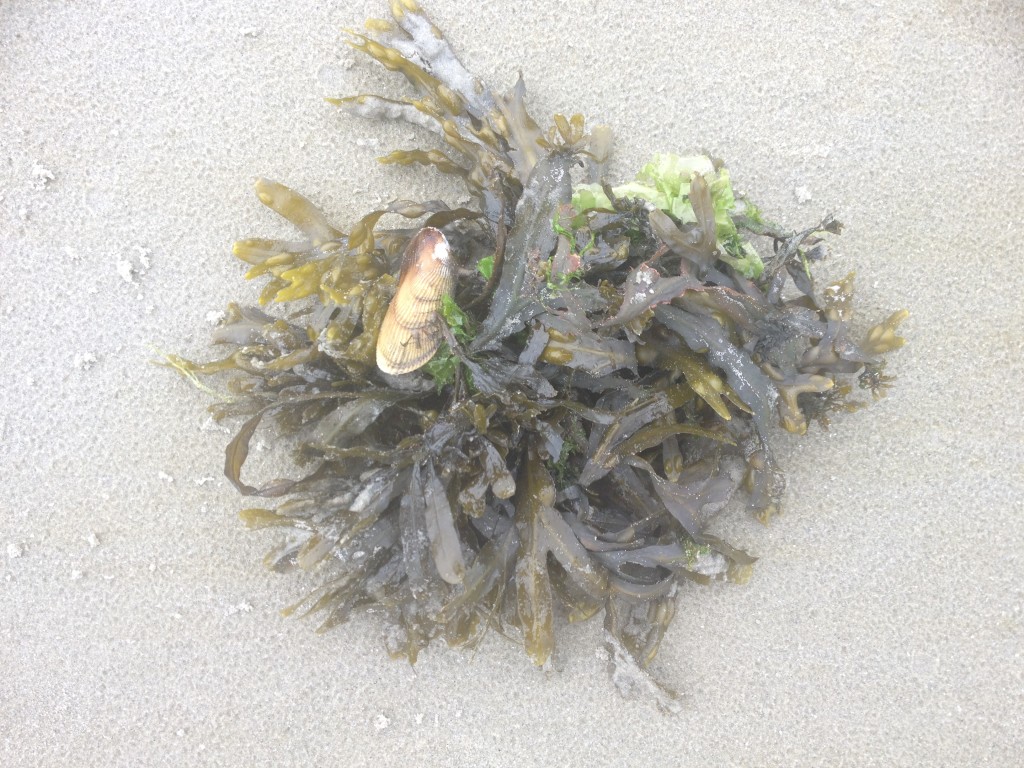And so it concludes, this is the last installment of the “What Marine Conservationists Are Into …” series. This is a series I featured this summer to get a special sneak peek at the many different personalities behind the scientists, activists, and educators (including bloggers) who play an integral role in the marine science conservation field. It’s essentially an extension of the overwhelmingly popular and well done Tumblr blog, This Is What A Scientist Looks Like, (BCS was featured in April of 2012!) which sets out to illustrate that scientists are not just crazy haired nerds in lab coats. I sent a list of 15 random questions and asked that each person share at least their answers to 5 of them.
Rounding out the esteemed group is Jessica Servis, a fellow Cape May County comrade. I love her quote at the end of the biography – It’s all about the little things. Thank you to everyone that participated in this series. It’s been an honor getting to know you all!
Jessica Servis run the Reach Program at US Sailing, educating youth in the fields of Science, Technology, Engineering, Mathematics (STEM) and Environmental Stewardship while utilizing sailing as the platform. Exposing children to STEM at a young age supports their overall academic growth and develops early thinking and reasoning skills. Experts in the field of education like Kamau Bobb Google agree that this early exposure can lay a solid foundation for future STEM learning and potentially inspire a lifelong interest in these fields.
The Reach Program is currently piloting the program at Community Boating Center in Providence, Rhode Island, the Edison Sailing Center in Fort Myers Florida, New England Science and Sailing in Stonington, Connecticut, Clearwater Community Sailing in Clearwater, Florida, and Sail Sand Point in Seattle, Washington.
Jessica has a Masters in Special Education from Rowan University, an undergraduate degree in Marketing and Public Relations. She has waitressed, bartended, worked in public relations in Atlantic City, taught kids with special needs in grades 1-8 at Oceanside Charter School in Atlantic City, started a non-profit and sailed competitively in college at Salisbury University. Jessica home schooled her oldest son for 2 years and loved every moment of traveling and learning together. She couldn’t be happier to work from home for US Sailing on the Reach program part time creating programs for youth nationwide. She loves to travel and learn new things. Jessica is mom to three wonderful little boys; Tristan 11, Caleb 5, and Nolan 3. One of her favorite things to do is spend time with them. They are all inspired by the sea and its creatures.
Jessica states, “As a special education teacher I have a passion for education, but what I love the most is teaching children to appreciate the little things. It is amazing what kids can learn from a walk on the beach, or day on the water. They hold those moments dear to their heart for ever.”
What is the last thing you bought that you shouldn’t have?
New black T-strap high heels, I am a flip flops kind of girl, I should embrace it.
What is your favorite fruit flavor?
Blueberry. I love Jersey Fresh homemade jersey blueberry jam.
What is your favorite Sunday breakfast?
My favorite Sunday breakfast is a cup of coffee and a walk on the beach.
What’s your favorite midnight snack?
Popcorn.
Are you a night owl or a morning person?
I am a morning person. I love to see the sunrise. There is something about the smell of daybreak by the water, it cleanses your soul.
What is your favorite room in your home?
The kitchen, I love to cook, especially with my little helpers.
Which sitcom character do you relate to?
I don’t watch television very much, but I would say Elaine from Seinfeld.
What is your favorite scent?
New England in the morning
What is your favorite sundae topping?
Rainbow jimmies (not Sprinkles)
What is your favorite pastime?
Sailing with kids and adults with special needs. I was the former Executive Director of Just-Sailing and we focused on accessible sailing. I wish I could start another program that focused on teaching people with special needs how to sail. The feeling of freedom and independence on the water is contagious.
What three things would you take with you to an island?
A fishing pole, a seine net, and a bucket. You never know what you might find.
How superstitious are you?
Not at all
What is your favorite day of the week?
Sunday, it’s family day. In the summer we spend Sunday’s at the beach with all of my cousins and their children. We order pizza, swim, fish, surf, build sand castles, collect shells, and laugh a lot.
Are you a cat person, dog person, or neither?
I am a dog person. Our dog Blue, (yes, like Blue’s Clues) is a black lab, she loves the boat and beach as much as I do.
If you were a geometric shape, what would you like to be?
I would be a pyramid; I have a strong foundation, with many different areas of interest. I work hard to achieve new heights never changing my foundation, always adding to it.
What’s some other random favorite information about you?
I learn something from every person that I meet. People are very interesting creatures especially the Beach Chair Scientist.


















What people are saying …